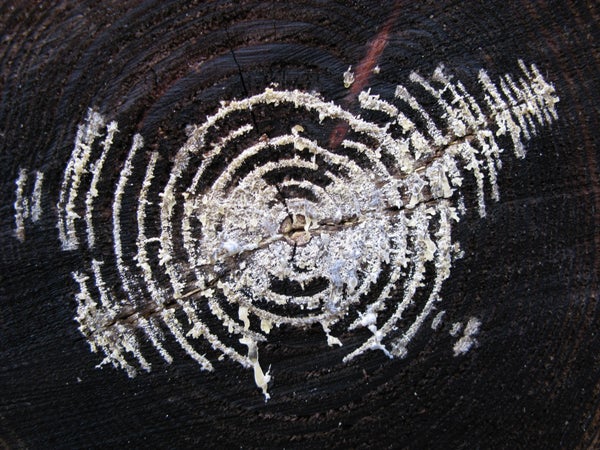This article was published in Scientific American’s former blog network and reflects the views of the author, not necessarily those of Scientific American
Humans have been harnessing the power of yeast for thousands of years. These fungi allow fermentation, the molecular process whereby living cells typically transform sugar or starch into more complex molecules or chemicals. Discovered 10,000 years ago, the technology of liquid fermentation—from mead to beer to spirits—and solid-state fermentation—bread and cheese—helped put humanity on a rapidly accelerating path of evolution and advancement.
Fast forward 9,950 years. Around three decades ago, humans applied the potential of liquid fermentation to create medicines. In 1978 Arthur Riggs and Keiichi Itakura produced the first biosynthetic insulin using E. coli as a single-celled manufacturing plant. The epiphany that single-celled bacteria and yeast are sugar-powered microfactories that can be utilized to synthesize novel compounds is one of the most powerful discoveries of the past 100 years.
Since that revolutionary insight occurred, science has been devoted to understanding, cultivating and ultimately reprogramming single-celled organisms such as yeast, bacteria and algae, and we've been using the process to make more lifesaving drugs, biobased fuels such as corn ethanol, fragrances and a growing suite of small biological molecules. Liquid fermentation is now a 150-billion-dollar industry and growing rapidly: many of the products we use today are moving from chemical factories to biological fermenters.
On supporting science journalism
If you're enjoying this article, consider supporting our award-winning journalism by subscribing. By purchasing a subscription you are helping to ensure the future of impactful stories about the discoveries and ideas shaping our world today.
But cells can do much, much more than produce compounds. Plants, animals and fungi all make molecules and assemble them into large structures. We can see this in our own bodies: our cells build bones, skin and organs—including human brains, the most powerful supercomputer on Earth. It's the combination of 1) making small molecules and 2) assembling them into structures that gives natural technology its miraculous properties. This is what enables a plant to capture a photon from the sun and generate a berry or apple—gobsmackingly[there's a lovely Britishism!] precise and intricate combinations of materials.
Our own attempts to emulate nature's structure-building capacity has thus far depended on 20th-century technologies such as extrusion and heat extraction, processes that brutalize small molecules to create crude polymerized structures. Ultimately through these processes we end up with products that are far inferior to nature's originals—pleather versus leather, particleboard versus wood and synthetic textiles, to name a few. Without nature's capacity for microassembly, the best properties of natural materials are lost.
Enter mycelium. Mycelium is kind of like yeast (both are fungi), but unlike most yeast cells, which grow as a single cell, mycelium is multicellular and can grow into macro-size structures—which we most often recognize as mushrooms. Not only does mycelium produce small molecules, but it gently and with supreme precision assembles them into complex structures so small that they are invisible to the human eye.
Working much like single-celled yeast, mycelium takes in small molecules of food—typically sugar but often from sources such as wood or plant waste—by excreting enzymes that break these materials down into digestible morsels. As the mycelium grows it assembles a dense network of long, microscopic fibers that grow through the substrate like a superhighway system.
Once the mycelium has fully built its network, it transitions to its next stage: building a mushroom. This is where humans can intervene. Rather than letting a mushroom pop up out of the substrate, the mycelium can be coaxed to build predictable structures by controlling temperature, CO2, humidity and airflow to influence the growth of tissue. This is a rapid process: the accumulation of fibers becomes a visible speck after a few hours, a visible sheet after a day or two, and an 18-by-2-by-12-inch sheet weighing a couple of pounds within the course of a week.
Directing the growth of mushroom fibers may not sound like a big deal, but this evolution in biofabrication stands to transform the way we manufacture, consume and live. What are the possibilities? Mycelium's fast-growing fibers produce materials used for packaging, clothing, food and construction—everything from leather to plant-based steak to scaffolding for growing organs. Mycelium, when harnessed as a technology, helps replace plastics that are rapidly accumulating in the environment.
Mycelium also provides a cruelty-free way to create meatlike structures with a much smaller environmental footprint than traditional livestock, reducing greenhouse gas emissions, the use of food crops for feed and land use conversion. All these benefits come with little environmental cost: the process of growing mycelium results in limited waste (mostly compostable) and requires minimal energy consumption.
This is not hypothetical. The technology for using mycelium to assemble the things that we need at scale already exists. Mushroom® packaging is on the market as a replacement for Styrofoam and is available in both the U.S. and Europe. Meanwhile, research on mycelium is accelerating as groups around the world, including leading academic institutions, are beginning to build programs around mycelium materials. For example, mycelium-based self-repairing structures—just add water and watch them grow—that also respond by synthesizing antidotes when exposed to toxins are currently being developed by DARPA.
Humankind needs to find ways to get ourselves out of the mess we've created. Our world is an ecosystem maintained by self-assembling organisms. Now we have taken the helm, we must use these organisms to steer, repair and rebuild our stressed yet faithful celestial transport. Biological technology is the most powerful technology we have access to, and with the proper harnessing, we can use it to live in harmony on spaceship Earth.
